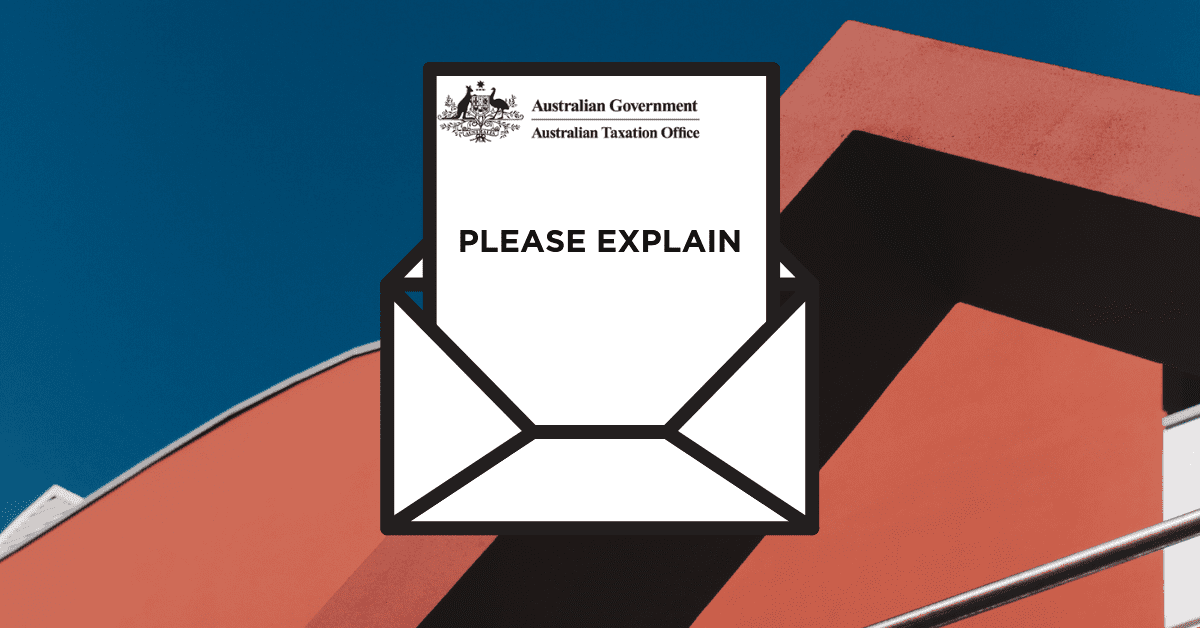It’s happened, you’ve opened your letterbox hoping to see an online-shopping package, birthday card or letter from a loved one. Unfortunately, luck isn’t on your side on this day and you’ve instead found an ominous ‘data matching’ letter, courtesy of the ATO.
What does it mean? What can you do? And who can help you to respond the right way? Before you descend into panic and liken the ATO to some sort of terrifyingly relentless ‘boogey-taxman’, know that this doesn’t have to be a fear-inducing affair. While this may not necessarily be the reward or note of love you were hoping to receive, it’s just a matter of figuring out where the issue lies, why it occurred and how to immediately fix it.
What is a ‘data matching’ letter?
Each year the ATO collects over 650 million pieces of data from organisations such as banks, employers, health insurers and government agencies – who have an obligation to report your tax information. As well as ‘special purpose acquisition data’ from a range of other sources, to address special projects or risks in areas where you might have additional income, (e.g. AirBnB).
This data is then used to paint a picture of what you tax-return should look like and spot any amounts that appear to be missing. That’s where your letter wielding taxman comes in, and it appears that he’s sending out more and more of these letters than ever before.
Over the past year, an increasing amount of discrepancies have been addressed with 250,000 letters being sent out. We expect to see this number to continue to grow as the ATO further automates the acquisition of data and the production of these letters.
In terms of what to expect of the letter itself if you receive it. It will outline the financial year that the found discrepancy occurred, what type of discrepancy it is, as well as how to contact the ATO if you wish to dispute the matter.
What do you do if you receive one?
While receiving such a notice can be understandably intimidating at first, don’t make the mistake of sticking your head in the sand and the letter in a drawer. Once you receive it, the clock’s ticking. While this is no reason to panic, it really is important that you address the problem immediately, or risk putting yourself in further tax debt and/or receiving undesirable penalties from the ATO.
As a starting point, ensure that you check all the facts. Be sure to review your previous records and claims to see if the reported discrepancy is accurate. Keep in mind, although the ATO generally uses sophisticated methods to identify these issues – there’s still always room for human error or issues in authentication systems, for any business or activity. Although rare, this exact issue occurred with one of our clients Threesides Marketing.
Threesides received one of these notorious ‘please explain’ letters, noting that the ABN and/or business banking details they had supplied were not legitimate. After much confusion and eventually consulting with us, we established that an error had been made on the ATO’s part, with the issue being later disputed and consequently resolved.
Much like this, if you believe that you have filed your taxes correctly and honestly reported income, you can use the information provided in your letter to dispute the case. If you choose to do this though, ensure that you have the right supporting documentation on hand to reinforce your claim, (e.g. PAYG summaries, income receipts and/or other proof for deductions).
Alternatively, if you find that it is likely that the ATO has rightfully picked out a hole in your previously lodged taxes and claims; all you can really do is pay what is owed and work towards rectifying the issue right away. Without doing this, a financial penalty will be imposed upon you based on the severity of your situation. According to the ATO, failure to take reasonable care, results in a penalty of 25% of the amount owed, recklessness is a penalty of 50% of the amount owed, and intentional disregard is a penalty of 75% of the amount owed… Or better yet, 0%, zero financial cost, and zero lingering concern, if you just resolve the issue on the spot.
These penalties are also subject to relief at the ATO’s discretion, but keep in mind that relief will not apply if you’ve received penalty relief in the last three years or have been convicted of tax evasion or fraud in the past.
Where can you find help?
If you’re unsure about how to respond to the letter, properly asses the discrepancies, or how to resolve your tax issues – remember you aren’t alone in this. We can help you to understand your obligations and get your affairs into the right order.





